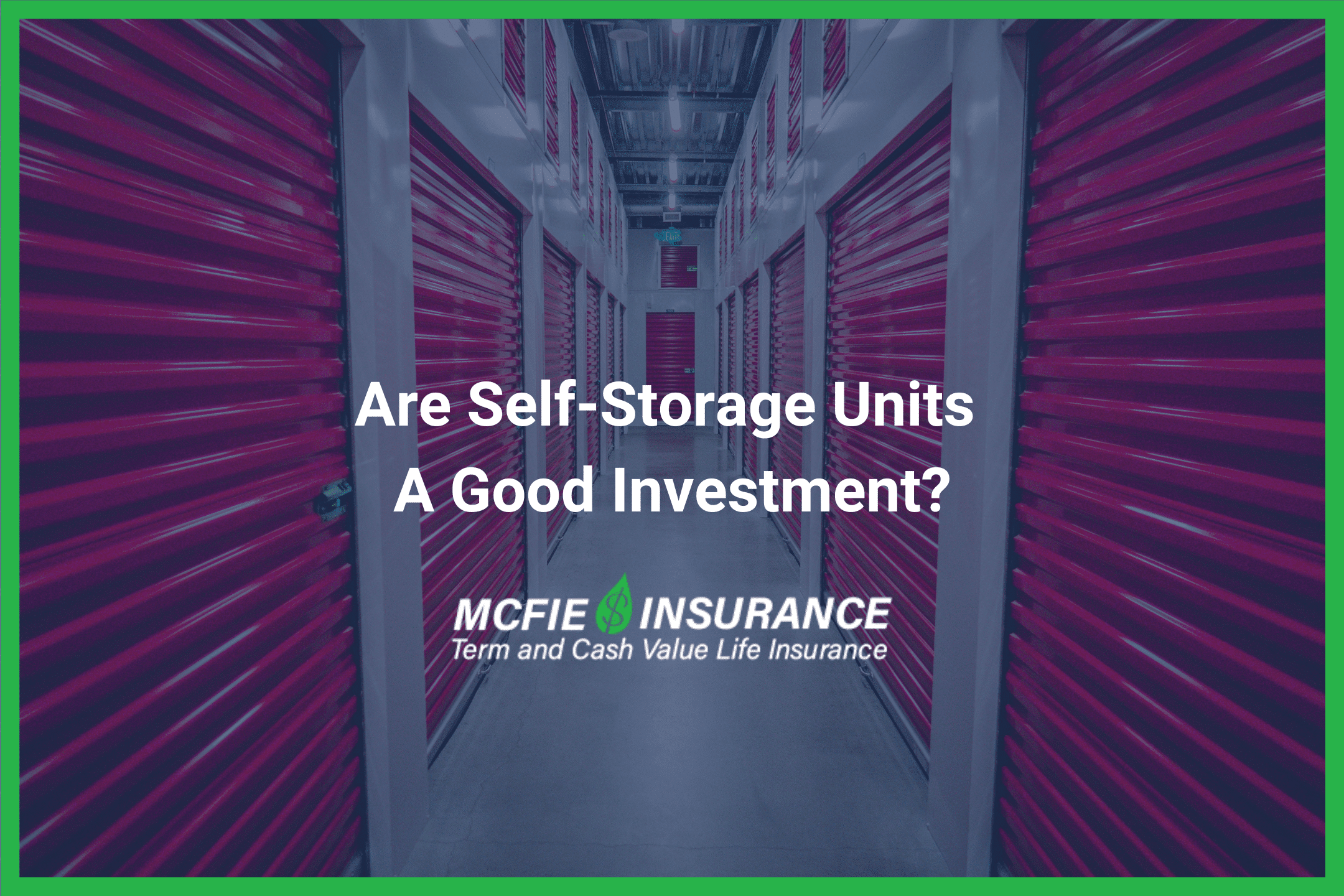702-660-7000
702-660-7000

Investing in self-storage involves placing funds into self-storage facilities to generate returns from the rental income of the storage units. Both individuals and small to medium-sized businesses can become your customers.
As an investor, you have the option to actively operate and manage the facility or to invest passively without involvement in the day-to-day business operations.
Tenants may rent the storage units for varying lengths of time, ranging from short to long terms. Regardless of the duration, you will receive rental income as long as the tenant occupies the storage unit with their belongings.
Experts consider self-storage investment a thriving business and a lucrative investment opportunity.
Every business carries certain risks that can affect your return on investment. To ensure a safer ROI, it is advisable to invest in options with lower risk. Self-storage features low operational costs, which translate into reduced business and operating risks. Additionally, the low operating costs contribute to higher profit margins, allowing you to handle short-term revenue fluctuations more effectively.
Self-storage businesses are witnessing increasing demand. A diverse range of customers, from students to large and small businesses, require storage units. High demand for self-storage allows you to operate at full capacity, yielding greater rental income. This increase in rental income results in higher revenue and profits, maximizing the value of your investment.
Investors can diversify their income streams from a storage unit by offering attractive add-ons such as loading and unloading equipment or vending machines, and by increasing tenant capacity. These strategies ensure a steady cash flow for investors.
One of the primary advantages of investing in self-storage is the potential for a stable income stream. Storage units are in high demand and provide consistent rental income from tenants. Unlike other types of real estate investments, which may suffer from fluctuations in occupancy rates, self-storage units often sustain high occupancy levels due to the continuous need for storage space.
Self-storage infrastructures are straightforward and require minimal maintenance. Once you construct a storage facility, it typically does not demand frequent improvements or enhancements to its infrastructure. All that is necessary is a secure space equipped with adequate lighting, a reliable security system, and fire protection equipment.
If a self-storage facility incorporates management software, it can automate operations, reducing the necessity for on-site staff and reaping the efficiency and cost benefits of automation. Such software can automate various functions, enhancing operational efficiency.
The self-storage business model is notably adaptable, allowing you to commence operations from an empty building and scale up as profits increase. Besides self-service kiosks, you can expand your service offerings by including valet storage, which can also be efficiently managed through software.
Many storage facilities provide valet services, including truck rental options to assist renters with moving their belongings. This flexibility ensures that investors can achieve the best return on investment (ROI) under any economic conditions. In prosperous times, the focus may shift to acquiring more storage units for sale, while during recessions, the demand for rental units typically increases as people look to downsize.
No investment is ever risk-free. So, watch for the following pitfalls:
While self-storage can be a profitable venture, its success depends on strategic positioning. Identifying the right market for your facility and establishing a strong presence in that market is challenging.
The complexity of market positioning stems from several factors:
Failing to thoroughly analyze these factors and implement an effective market positioning strategy can prevent you from achieving the desired outcomes from your storage facility.
Contrary to popular belief, managing a self-storage facility is not entirely hands-off. Even with the implementation of the latest self-storage management software to automate many functions, active management is still required to oversee certain aspects of the business.
It is crucial to ensure that security systems, management software, and other utilities are updated regularly. A comprehensive business plan is essential, along with an expert team capable of executing this plan effectively.
The simplicity of constructing and maintaining storage facilities attracts a growing number of investors to self-storage investing. However, this increased interest poses the risk of oversaturating the market with storage facilities. Consequently, competition can escalate, potentially diminishing the demand for your specific storage facility.
Class A self-storage facilities encompass those newly constructed within the past 10-15 years. Positioned in prime locations, these facilities boast modern amenities including climate-controlled storage units, sophisticated storage management software, and advanced security systems. As a result of these amenities, Class A facilities typically experience low turnover rates and maintain high occupancy levels.
Storage facilities exceeding 15 years in age fall into the B class category. While these facilities provide amenities and maintenance, they do not match the quality of A-class facilities. They may lack around-the-clock maintenance and climate-controlled features. Additionally, the rental rates for these storage units are typically average.
Storage facilities that are older and situated in non-prime locations are categorized as C-class storage. These facilities typically offer limited amenities and have low rental charges. Moreover, their security measures may not meet high standards.
As an investor, it’s essential to evaluate the features and amenities provided by each facility class when making investment decisions.
If you wish to invest in the self-storage market, here are three popular ways to do so. You can analyze each one of them closely to decide which one to choose.
Utilizing the cash value of a whole life insurance policy to fund the purchase of storage rental properties, comes with a unique set of advantages:
Pros of Using Whole Life Insurance:
 | Policy Checklist Make Sure You Get a Good Policy Is your policy good or bad? Use this checklist to help evaluate your existing life insurance or a new policy you are considering. |
Cons of using Whole Life Insurance:
Another way to enter the self-storage industry is by investing in real estate investment trusts, or REITs. Self-storage REITs own and manage self-storage facilities, earning profits by leasing storage spaces to individuals and businesses.
REITs are considered one of the top investments in self-storage due to their performance and returns. They offer a low-capital entry point, allowing investors to become passive participants.
Investing in a well-performing self-storage REIT with promising profitability projections can yield returns similar to those of stocks.
Self-storage REITs generate income from various sources, including rental fees, management charges, reinsurance revenue, and late payment penalties.
Pros of Investing in Self-storage REITs:
Cons of Investing in Self-storage REITs:
Identifying and navigating current and potential competition in the local area is crucial but challenging.
Many active investors opt to construct a storage facility from the ground up to achieve their specific goals. However, building a storage facility entails significant effort and investment. Extensive market research is essential to select the right location and identify the ideal site.
Following construction, effective marketing strategies are necessary to attract customers and provide high-quality services to retain them.
Pros of Building a Self-storage:
Cons of Building a Self-storage:
To ensure a favorable investment climate, conduct comprehensive market research to identify regions with high demand and limited supply of storage units. Analyze factors such as population growth, local economic conditions, and competition. This analysis will help you pinpoint areas where investing in a storage facility is most promising.
Assess the financial aspects of investing in storage units by evaluating factors such as purchase price, operating expenses, rental rates, and potential return on investment. Collaborate with a financial advisor or real estate professional to thoroughly analyze the economic viability of the investment. This partnership ensures a comprehensive understanding of the financial implications and potential returns associated with investing in storage units.
When considering self-storage investments, location plays a pivotal role in determining success. Select a location with a significant population, commercial activity, or residential developments, prioritizing convenience, and accessibility for potential customers. Avoid solely relying on projections when making location decisions.
Consider storage unit features such as security systems, climate control options, and unit sizes to accommodate diverse customer needs. By carefully assessing both location and facility features, you can enhance the attractiveness and functionality of your self-storage business.
Understanding the habits and preferences of your target customers is crucial for effectively catering to their needs as an investor. By gaining insight into consumer behavior, you can allocate your resources wisely.
The primary target customer groups for self-storage include residential, commercial, students, and military personnel.
Residential customers typically require medium-sized storage units to store furniture and other belongings during home moving or downsizing. They typically rent a storage unit for a duration ranging from 6 to 13 months.
Commercial customers, consisting of small and medium-sized businesses, rent units to store inventory. They typically require medium to large storage spaces for a period of 2 to 4 months.
Students often rent storage space during holidays, academic breaks, or internships. They prefer units located near their campus and typically rent for a duration of 3 to 4 months. If targeting students, prioritize offering storage options at affordable rates.
Military personnel seek storage facilities close to their military bases. They rent storage space during deployments, often for durations exceeding six months.
To maximize your return on investment in self-storage, it’s crucial to mitigate risk factors through strategic planning and thorough market research.
One of your primary concerns should be the frequency of break-ins at storage units in your target location. If the rate is high, consider implementing additional security measures and ensuring adequate oversight at the facility.
Instead of solely focusing on cost reduction, invest in amenities and repairs that can justify higher rental charges. Features such as improved lighting, advanced management software, and modern lock systems can enhance the perceived value of your units.
Targeting secondary or tertiary locations can help mitigate the risk of oversaturation. Primary locations often face overcrowding due to the presence of large operators, making secondary or tertiary areas potentially more lucrative investment opportunities.
This is entirely dependent on your financial situation. Storage units are a great investment if you follow sound financial principles to ensure you don’t fall into any sticky situations. Give the team at McFie Insurance a call and we can help you understand if leveraging whole life insurance is a viable path for investing in storage units. Schedule a consultation today!